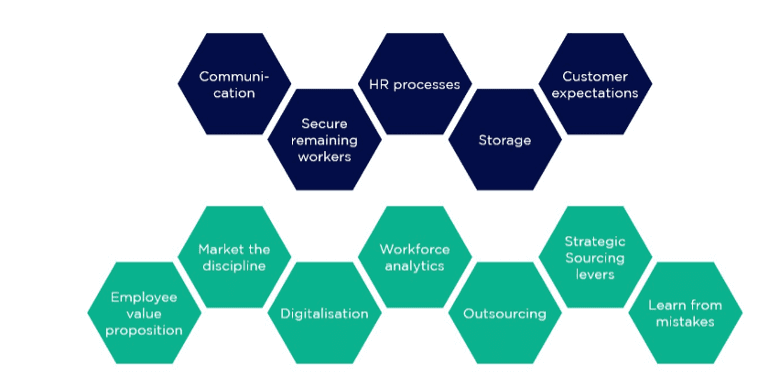Waiting at airport security. Waiting for a package to arrive. Waiting on the phone for customer support.
It’s one big waiting game. The cause? A global labor shortage.
One industry suffering acute pain during this crisis is supply chain and logistics. Whether it be a shortfall in delivery drivers, a lack of warehouse employees, or an inability to hire skilled professionals to manage processes, technology, and personnel, supply chains world over has struggled to keep pace.

A recent study by Kron Ferry estimating that by 2030, there will be a shortage of 85.3 million skilled workers worldwide, costing the global economy 8.5 trillion dollars. The GDP of Germany and Japan combined this problem is not going away any time soon.
In this Blog Post we examine the cause and the impact of supply chain labor shortages and some of the solutions that can be implemented to solve some short-term and long-term problems.
What is causing the supply chain labor shortage?
It’s difficult to avoid the news regarding global events of the last few years. Covid-19, the war in Ukraine and the Middle East. The world’s economy has experienced its fair share of shocks. How have these events contributed to the current labor shortages? More specifically, how have these events caused a labor shortage in supply chain and logistics?
COVID-19
As the global economy reeled from the spread of Covid-19 and its associated lockdowns, many industries had to cut cost just to survive. Airlines laid off support staff, construction companies downsized their workforce, and hospitality businesses reduced their roster to a bare minimum or failed to survive altogether. Unemployment rose across the board. What followed was a long period of furloughs and under-utility. Many sought employments in industries less affected by lockdowns and in the process developed new skill sets. When lockdowns ended and companies tried to lure their workers back, they found many were not willing to return, having embarked on new career paths.
Covid-19 also greatly disrupted immigration. Many economic immigrants returned to their home countries during the pandemic and have not returned. While the Covid travel restrictions put a drastic stop to the inflow of new migrant workers.
Covid-19 is responsible for changes in the workforce itself. The latest estimates suggest that the pandemic has caused over 6 million deaths worldwide, which in the bleakest terms, has reduced the size of the workforce. On top of that, uncertainty shifted workers expectations and priorities to a better work life balance.
In short Covid -19 has caused irreversible changes in attitudes to work.
Aging Workforce and a Generational Shift
According to the US and Canadian Chamber of Commerce declines in the workforce are nothing new, fewer, and fewer North Americans have been participating in the workforce for decades, resulting in a smaller workforce that is expected to continue shrinking for years to come.
With the Boomers generation approaching retirement the millennials and Gen Z must carry the torch for supply chain. Unfortunately, there exists a misperception and a general mistrust of logistics and supply chain roles among these younger generations, with the industry seen as a purveyor of temporary, low-paid gig work offering few prospects for growth beyond delivering packages. Despite the resent explosion in new supply chain technology, and the importance supply chain holds in the ever more connected and faster paced world. Such reputations are difficult to shake.
As a result, supply chain is battling, and often losing out to, more attractive industries. This is causing a labor shortage for the industry’s entry roles and will cause another shortfall later for those supervisory roles that require experience.
Skills Gap
Supply chain is quickly evolving and has made large strides and advancements in technology. AI and automation. This has streamlined processes and improved efficiency. While this might suggest a reduced requirement for personnel, it has in fact increased the number of open roles in the industry. Development teams, tech support, operators’ roles are lying vacant, and applicants require advanced skillsets and training.
For years technology has experienced an under-supply of skilled workers. This stems from a general lack of investment in relevant skillsets, a problem experienced in many developed countries, and a lag in up-skilling, as training and retraining takes time. In short, the skills gap for supply chain is wide, and on its present course, its only getting wider and intensifying the supply chain labor shortage.
The Rise in E-commerce
Vast improvements in technology and Covid-19 propelled increases in e-commerce sales. The engine room of e-commerce is supply chain and supply chain operatives. With greater demand an ever-increasing service level expectation, the supply chain has never needed more personnel. But in tomes of labor shortages, the situation has become precarious.
The Solution
The labor shortage is not going away any time soon. So, what can supply chain operators do to combat the labor shortages.


